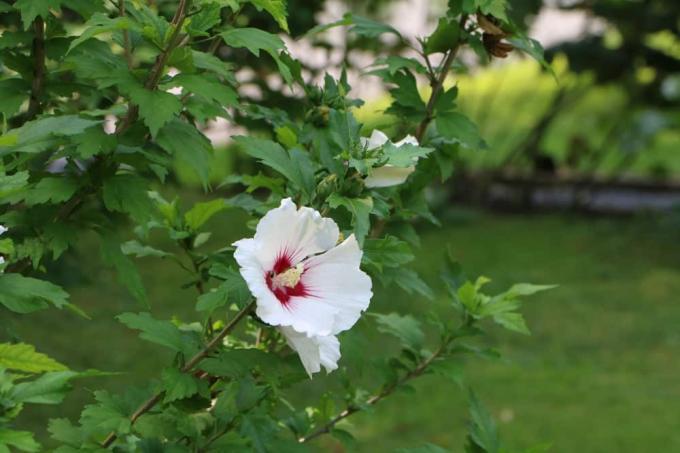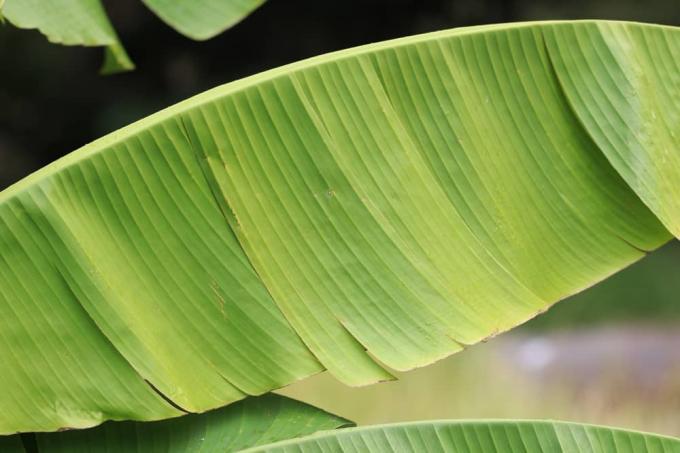

Table of contents
- Location
- substrate
- Pour
- Fertilize
- waste
- frost
- Mistakes in care, diseases and pests
- Conclusion
A blooming hibiscus is a real ornament - regardless of whether it was planted outdoors or adorns a bucket. It is therefore particularly annoying when the plant, also known as garden marshmallow, does not bloom. But as numerous as the causes for this can be, they can usually be eliminated quickly and the flowering power strengthened again.
Location
The location for the garden marshmallow should be sunny or at most partially shaded. If it is too dark, the hibiscus loses its flowering power. Even if roots have developed, they are often shed before they can open if the site conditions are wrong.
In addition, very close attention must be paid to drafts and temperature fluctuations. The location can be airy. However, the garden marshmallow is very sensitive to cold drafts. It is therefore ideal to plant or place it sheltered from the wind. The south side near walls is optimal. On the balcony or terrace, the plant should be on the wall of the house rather than on the parapet.
Tip:
With a hibiscus that is cultivated indoors, attention must also be paid to drafts. The garden marshmallow should not stand on leaky windows and doors or even when airing in the middle of a draft. In addition, he should change his location as seldom as possible, because he does not tolerate that well.
substrate
The substrate can also be a reason why the hibiscus does not bloom. It should meet the following requirements:
- Potted plant or potting soil
- Slightly acidic or neutral
- Neither clay nor loamy
- Not tending towards compaction
- Moderate to high nutrient content

A high-quality and nutrient-rich potting soil is therefore recommended. If the substrate is older, adding mature compost and, if necessary, some sand can ensure optimal conditions. In fact, a mixture of mature compost and some sand can be used directly.
Pour
The water content of the soil and the moisture play a decisive role in the blooming joy of the garden marshmallow. If there are constant changes in humidity, this can already cause problems for the sensitive buds. The effects of incorrect watering are even greater. The following factors should be considered:
- Do not use cold water, it should be stale and at least correspond to the outside or room temperature
- Cast only when the top layer of the substrate has dried
- Watering should be done regularly to avoid extreme fluctuations
- Waterlogging must be avoided urgently to prevent root rot
Fertilize
A sufficient supply of nutrients is crucial for the garden marshmallow to produce buds and flowers. If they are missing, the plant inevitably weakens and no longer has the strength to form leaves and flowers.
The hibiscus should therefore be cared for accordingly. Among other things, it is advisable to:
- liquid fertilizer
- pond water
- Plant brew or plant manure
- compost
- Patent Kali
Liquid fertiliser, pond water and plant decoction and manure can be administered every two weeks during growth and flowering. Compost should only be sprinkled onto the soil once a month and worked lightly into its surface. Patentkali is administered only once a year, between August and September.
Tip:
A clear sign of a nutrient deficiency is poor overall growth, but wilted or discolored leaves can also indicate it.
waste

The garden marshmallow can be wonderfully cut into shape - be it as a standard or a shrub. However, buds can also “fall victim” to the measure. The best time is therefore in late winter, i.e. around January or February. The trimming can also be omitted, but in the longer term it favors the strong development of buds and flowers. If the garden marshmallow stops blooming, a rejuvenating pruning could also help.
When cutting the hibiscus, the following points should be observed:
- Use clean, ideally disinfected cutting tools
- Remove all dead and weak shoots as close as possible to the main trunk or the next larger branch
- Thin out the crown if necessary
- Decrease about a quarter of the length all around
With a rejuvenation pruning, all shoots are shortened more radically. Only a length of 30 to 60 centimeters per shoot remains. This procedure is only necessary if the garden marshmallow has not been cut for several years and the flowering power is decreasing.
frost
A grown garden marshmallow is frost hardy and does not require any further precautions in a wind-protected location in order to be able to survive the winter unscathed. With young plants and the culture in the bucket, however, it is a little different. A hibiscus in a pot should be overwintered indoors and frost-free. It is only important to ensure that the temperature of the winter quarters does not exceed 10°C and that the substrate does not dry out completely.
If the garden marshmallow has just been planted or if it is a young plant, the hibiscus outdoors should be well protected by a mulch layer. Wrapping with garden fleece can be useful in windy or draughty locations in order to protect the plant's strength and thus increase its flowering power.
Mistakes in care, diseases and pests
The garden marshmallow is robust in itself, but can suffer from root rot or chlorosis if it is not cared for properly. Root rot is caused by waterlogging, such as excessive watering or poor water drainage. These risk factors can be avoided by placing drainage in the planting hole or bucket and watering it appropriately. If the hibiscus is already diseased, it must be dug up, dead root ends removed and the substrate changed.
Chlorosis is a deficiency symptom that manifests itself in discolored leaves and the absence of flowers. Fertilization has both a preventive and a balancing effect.

On the part of the pests, spider mites and aphids are the most common. Both species can weaken the garden marshmallow and thus cause a loss of flowers. Against aphids, it helps to spray the plant thoroughly with nettle juice every day. For spider mites, increasing the humidity around the leaves helps. The hibiscus is showered and wrapped in foil. It would be ideal if this could be attached airtight. After two to four days, the foil is removed and the hibiscus is showered again. The measure is repeated until no more spider mites and webs can be seen. In between, however, the leaves and bark should be allowed to dry so that mold does not form.
Tip:
When the hibiscus is not blooming (anymore), it should be closely inspected for signs of disease and pests. Often these can cause a weakening and the loss of the buds almost unnoticed for a long time.
Conclusion
If the flowering power of the garden marshmallow is decreasing or missing, it often helps to check the conditions at the location and the care and adjust them if necessary. Anyone who finds out about the requirements of the plant and the most important requirements in advance can even prevent the hibiscus from flowering.
 Home editorial office
Home editorial office
Learn more about potted plants

Abalie, Abelia grandiflora: 14 tips for proper care
The large-flowered abalia (Abelia grandiflora) is an extraordinarily easy-care ornamental shrub that delights with numerous funnel-shaped and subtly scented flowers. It is just as suitable as a background plant as a hedge or container plant.

Caring for the tangerine tree properly | 13 tips for the tangerine tree
Many citrus plants have evolved from the tangerine, one of the oldest and most original citrus species. With its white flowers and orange fruits, it is a feast for the eyes and the palate. In this country it is only cultivated as a container plant due to its sensitivity to frost.

Indian canna, Canna indica | 13 tips for care
Canna indica, also known by the botanical name Canna indica, is a decorative plant that not only enriches every garden during flowering. In pot culture, it can be used as an accent for many years thanks to its color and growth.

11 absolutely hardy container plants
Absolutely hardy potted plants have several advantages to offer, because they can remain outdoors even when the temperature is below zero and require little protection. If they are also evergreen, they can also bring joy all year round.

Is dwarf bamboo hardy? | 11 tips for care & cutting
Dwarf bamboo is one of the easy-care sweet grasses. In the garden, it can be used as a good ground cover, as it does not grow as tall as its larger relatives. Whether the plant is hardy and how it is cared for and cut can be read in the guide.

Pink dwarf banana, Musa velutina | Care of the Kenya Banana
The pink dwarf banana (Musa velutina) is an eye-catcher in the garden. It grows to a maximum of two meters and impresses with its impressive flowers. The small pink fruits taste sweet and aromatic. If you want to harvest the exotic fruits, you should follow our care tips.
